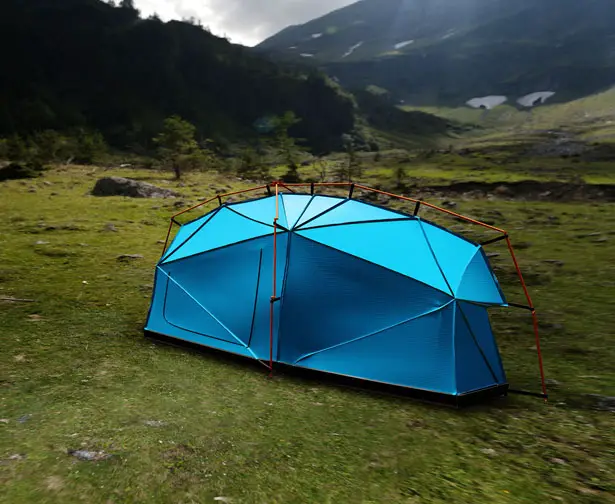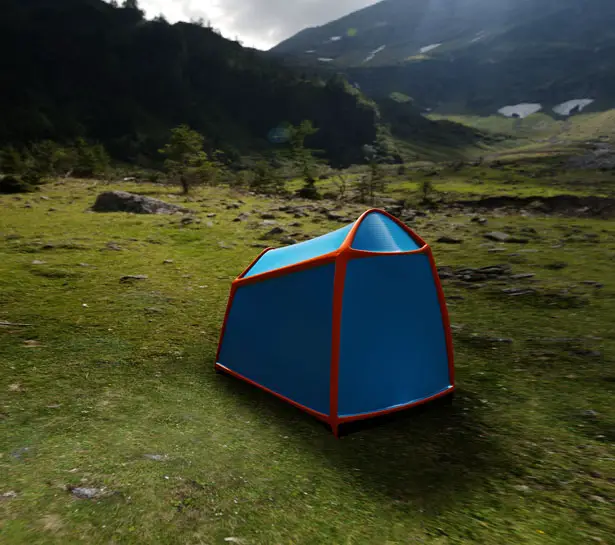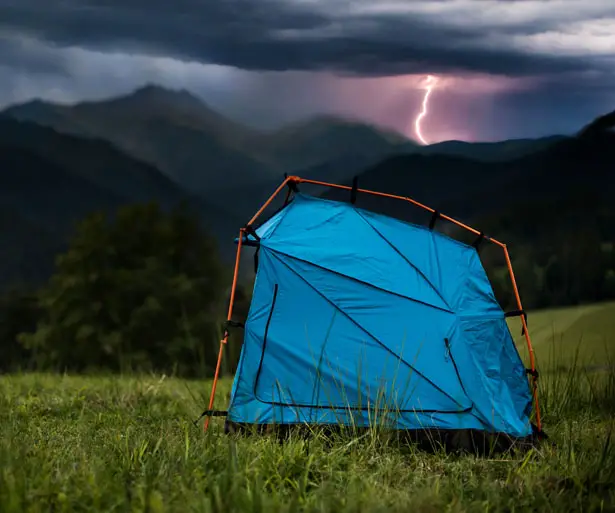Bolt Tent is a special project aims to increase the safety of people caught out in the open during a thunderstorm. A few thousand people get struck by lightning every year. About 96 % of those killed and injured are people out in the open. The majority of them are people participating in outdoor activities such as hiking and camping. Many accidents in the mountains can be ascribed to the panic brought about by spectacular lightning that generates extreme fear among tourists. It is estimated that there are a few times more victims indirectly linked to discharges than those struck directly.
Bolt Tent features 3 models: Bolt-Half, Bolt One, and Bolt Air. These tents are made of ultralight materials and thus meet the needs of those practicing many different kinds of outdoor recreation. They can be put up fast and are easy to carry around. They can also protect you against unfavorable weather conditions accompanying thunderstorms, for example rain and wind.
Designer : Kama Jania
Bolt One

Bolt Air

Bolt Half

BOLT-ONE
A lightweight, compact, one-person tent with full lightning protection* for longer trips of a few days.
*direct and ground strike (step voltage)
BOLT-AIR
An ultra-lightweight, pneumatic tent with a groundsheet protecting from injuries due to step voltages (the most common way people are struck by lightning). Just like Bolt-Half, thanks to its size, it can be quickly and easily put up in places unsuitable for standard tents. It is designed for day-long trips where additional weight would be burdensome.
BOLT-HALF
A lightweight (1,2 kg) tent with full lightning protection* for day-long trips, indispensable in difficult situations brought by a sudden change of weather conditions (a thunderstorm, downpour, wind). Due to its size, the tent can be put up in seemingly unsuitable places, like a ledge, ridge etc.
*direct and ground strike (step voltage)


The tent underwent high voltage tests with discharges produced by an impulse voltage generator. An electrode imitating a tourist’s head was placed in the tent. The estimated voltage depended on the distance between the tent and the end of the electrode and was varied between 400 kv and 1MV. A High current generator was used to check the tent’s durability. A series of electrical discharges with different peak current values were directed at the top of the tent poles.
Where the pole segments connected to each other scorches could be noticed, which means that those points experienced very high temperatures. That is explained by their relatively high resistance. The tent stakes, which laid freely on the laboratory floor during the tests, melted to some extent. Again, it suggests high temperatures generated at those points during the discharges. A dramatic temperature increase in the short period of time resulted in sparks, i.e. particles of hot aluminum. The generated peak current was comparable to that occurring in a lightning strike. Statistically, lightning strikes vary between 30 and 40 kA, though higher values (more than 200 kA ) have been also reported.
Tuvie has received “Bolt Tent” project from our ‘Submit A Design‘ feature, where we welcome our readers to submit their design/concept for publication.








Great project!
We need to be able to buy these great tents